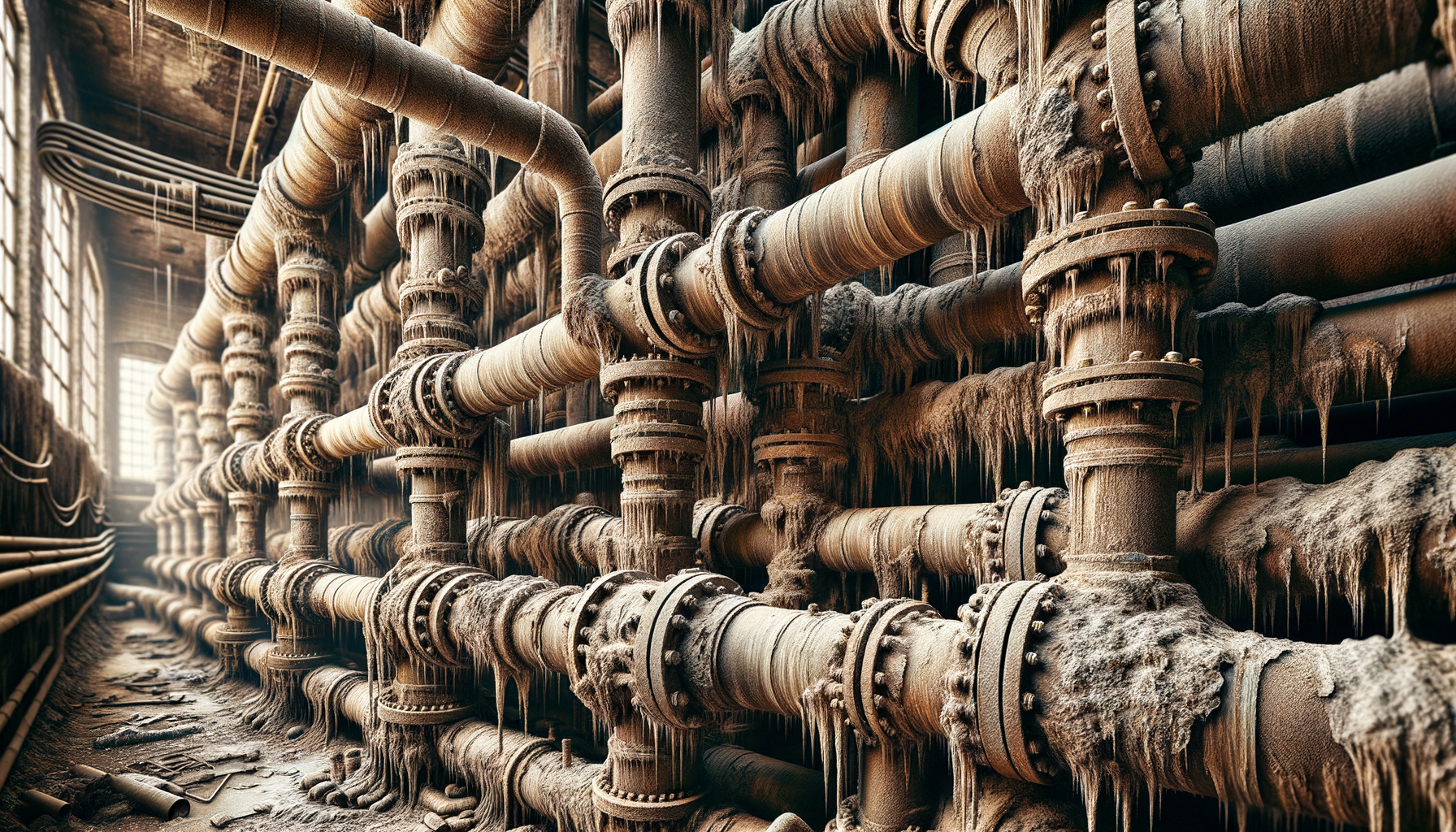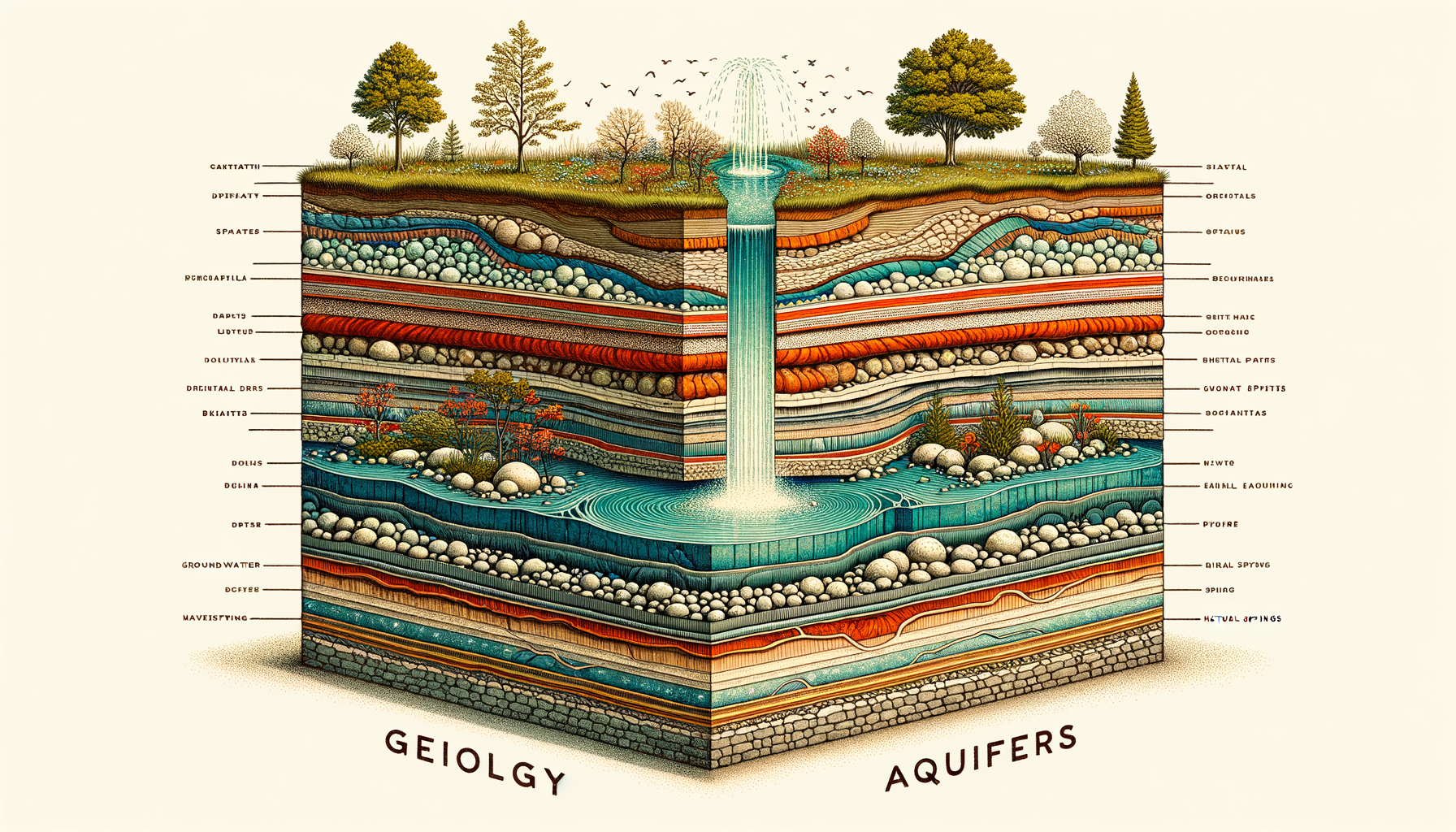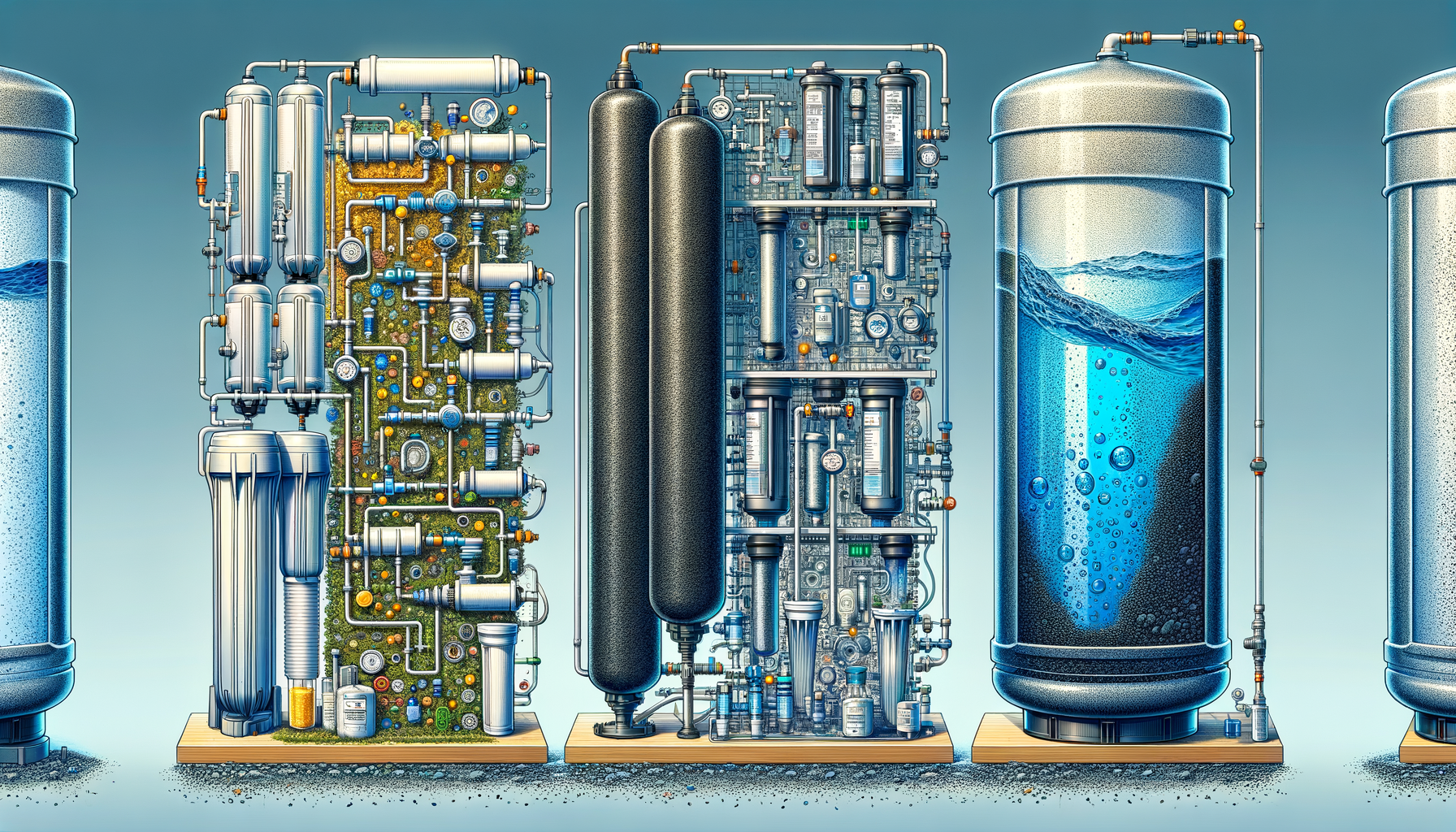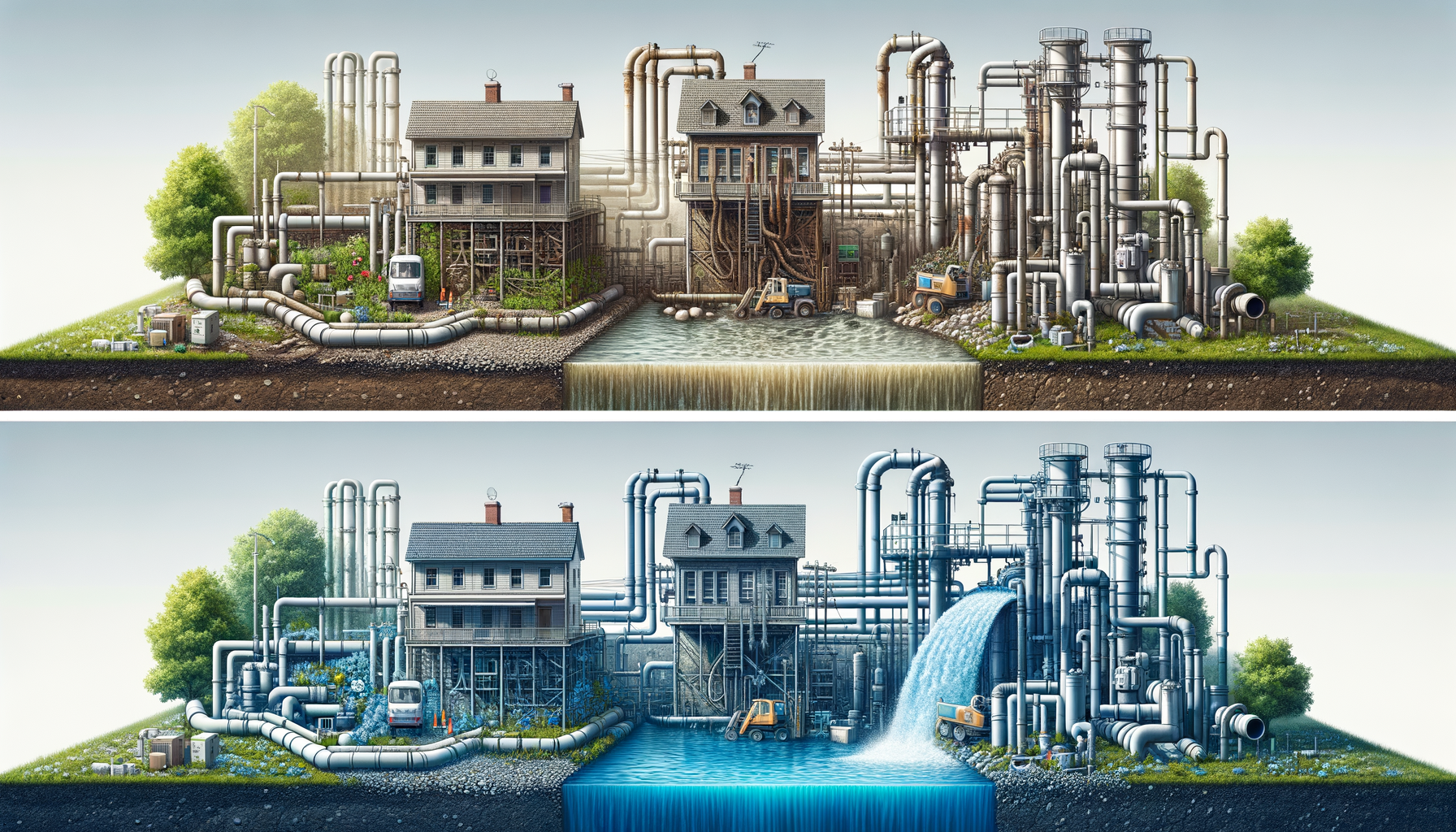Comprehensive Guide to Water Quality in Connecticut: Contaminants, Issues, and Water Filtration Solutions
by Ryan Moreau / updated February 18th, 2025
Connecticut is rich in water resources, boasting numerous rivers, lakes, and a scenic coastline along Long Island Sound. From the bustling cities to the quaint rural towns, water quality remains a critical concern for residents. This comprehensive guide delves into the common contaminants affecting Connecticut’s water, regional challenges, and effective filtration solutions. Begin by using our Water Quality Tool to receive a customized analysis of your local water conditions.

Overview of Connecticut’s Water Sources
Connecticut’s water supply emanates from a mix of surface water and groundwater sources. Key water sources include:
- Connecticut River: One of the longest rivers in New England, it serves as a vital water source for many communities along its banks.
- Reservoir Systems: Municipalities like Hartford and New Haven rely on reservoirs such as Lake Gaillard and Barkhamsted Reservoir for drinking water.
- Groundwater Aquifers: A significant portion of rural Connecticut depends on private wells tapping into groundwater, which can be susceptible to local geology and human activities.
- Long Island Sound: While not a direct source of drinking water, coastal areas are influenced by the Sound’s ecosystems and water quality, impacting local economies and recreation.
The state’s diverse water sources necessitate vigilant monitoring and tailored water treatment strategies to ensure safety and reliability.
Common Water Quality Contaminants in Connecticut
Connecticut faces unique water quality challenges stemming from industrial history, agricultural practices, and natural geological formations. To better understand potential contaminants in your area, start with our Water Quality Tool and consider the following prevalent issues:
1. Radon
Radon is a naturally occurring radioactive gas found in Connecticut’s groundwater due to the state’s underlying granite bedrock. When present in water, radon can be released into the air during household water use, increasing the risk of lung cancer.
Water Filtration Options for Radon: Aeration systems and granular activated carbon filters are effective in removing radon from water.
2. Arsenic
Arsenic can be found in some private wells due to natural deposits in the earth or from past agricultural use of arsenic-containing pesticides. Long-term exposure is linked to various cancers and cardiovascular diseases.
Water Filtration Options for Arsenic: Reverse Osmosis Water Filters, adsorption media filters, and ion exchange systems.
3. Uranium
Similar to radon, uranium can leach into groundwater from natural geological formations. Prolonged ingestion can affect kidney function and increase health risks.
Water Filtration Options for Uranium: Anion exchange systems and Reverse Osmosis Systems.
4. Nitrates
Agricultural runoff and failing septic systems can elevate nitrate levels in groundwater. High nitrate levels are particularly dangerous for infants, leading to methemoglobinemia or “blue baby syndrome.”
Water Filtration Options for Nitrates: Reverse Osmosis Systems, ion exchange units, and distillation systems.
5. Volatile Organic Compounds (VOCs)
VOCs such as benzene, trichloroethylene (TCE), and tetrachloroethylene (PCE) can contaminate groundwater near industrial sites or old landfills. Exposure to VOCs can lead to liver, kidney, and nervous system damage.
Water Filtration Options for VOCs: Activated Carbon Filters effectively reduce VOC levels.
6. Bacteria and Microbial Contaminants
Private wells in Connecticut may be at risk for bacterial contamination from surface water infiltration or septic system leakage. Pathogens like E. coli, Giardia, and Cryptosporidium can cause gastrointestinal illnesses.
Water Filtration Options for Microbial Contaminants: Ultraviolet (UV) disinfection systems, ozonation, and proper well maintenance.
7. Lead and Copper
Aging plumbing infrastructure in older homes can leach lead and copper into drinking water, especially if the water is corrosive. These metals pose serious health risks, particularly to children and pregnant women.
Water Filtration Options for Lead and Copper: Reverse Osmosis Systems, NSF-certified filters for lead reduction, and corrosion control measures.
8. PFAS (Per- and Polyfluoroalkyl Substances)
Known as “forever chemicals,” PFAS have been detected in some areas of Connecticut due to industrial discharges and use of firefighting foams. PFAS exposure is linked to immune system effects, thyroid disease, and increased risk of certain cancers.
Water Filtration Options for PFAS: High-quality Activated Carbon Filters and Reverse Osmosis Systems.
9. Manganese and Iron
These naturally occurring metals can cause staining, taste, and odor issues. While not typically harmful at low levels, high concentrations can lead to health concerns and affect water quality.
Water Filtration Options for Manganese and Iron: Oxidation filtration systems, water softeners, and sediment filters.

Regional Water Quality Challenges in Connecticut
Connecticut’s varied landscape presents distinct water quality challenges. According to the Connecticut Department of Public Health (CT DPH) and the Environmental Protection Agency (EPA), key regional issues include:
1. Industrial Legacy in the Naugatuck River Valley
The Naugatuck River Valley has a history of manufacturing, leading to concerns over heavy metals and chemical contaminants in both surface water and groundwater sources (Connecticut Department of Energy & Environmental Protection).
2. Agricultural Runoff in Eastern Connecticut
Areas with intensive farming activities, such as dairy and crop farming, can contribute to elevated nitrates and pesticide residues in local water supplies.
3. Coastal Areas: Saltwater Intrusion
Communities along the coast may experience saltwater intrusion into freshwater aquifers, particularly during drought conditions, affecting the taste and suitability of water for consumption.
4. Radon and Uranium in Groundwater
Northern and western parts of Connecticut, underlain by granite formations, are more susceptible to radon and uranium in well water, necessitating specialized treatment.
General Water Characteristics in Connecticut
Understanding the general characteristics of Connecticut’s water can help residents choose appropriate water treatment solutions:
1. Water Hardness
Water hardness varies across the state, with many areas experiencing moderately hard to hard water due to minerals like calcium and magnesium. Hard water can cause scaling on fixtures and reduce the efficiency of water heaters.
Residents dealing with hard water may benefit from installing a water softener. To determine if a water softener is necessary and select the appropriate type, use our Water Softener Calculator for personalized advice.

2. pH Levels and Corrosivity
Some regions in Connecticut have naturally acidic water, leading to corrosive conditions that can leach metals from plumbing. Low pH water not only affects water taste but also poses a risk of metal contamination.
- Acidic Groundwater: Particularly in areas with granite bedrock.
- Infrastructure Concerns: Older homes with copper pipes are more vulnerable.
Installing a neutralizing filter or chemical feed pump can adjust the pH to neutral levels, protecting your plumbing and improving water quality.

3. Natural Organic Matter
Surface water sources may contain higher levels of natural organic matter (NOM), which can react with disinfectants like chlorine to form disinfection byproducts (DBPs). These byproducts are regulated due to potential health risks.
- Color and Taste Issues: NOM can impart color and affect the taste of water.
- Disinfection Challenges: Treatment adjustments may be necessary to minimize DBP formation.
Advanced filtration methods, such as activated carbon filtration and enhanced coagulation, can reduce NOM levels in your water supply.

Utilizing the Water Quality Tool for Connecticut Residents
Gaining insights into your local water quality is a vital step toward ensuring safe drinking water for your household. Our Water Quality Tool enables Connecticut residents to:
- Input their zip code to access detailed information on their local water sources
- Identify common contaminants affecting their area
- Receive tailored recommendations for water filtration systems based on specific water quality concerns
Recommended Filtration Solutions for Common Connecticut Contaminants
Based on the prevalent contaminants in Connecticut, the following filtration systems are highly effective:
1. Reverse Osmosis Systems
Reverse Osmosis Systems are highly effective in removing a broad range of contaminants, including arsenic, uranium, nitrates, lead, and certain PFAS compounds.
2. Activated Carbon Filters
Activated Carbon Filters are excellent for reducing VOCs, PFAS, chlorine, and improving taste and odor, making them suitable for municipal water supplies.
3. Water Softeners and Neutralizing Filters
For areas with hard or acidic water, water softeners can mitigate scaling, while neutralizing filters can correct low pH levels to prevent corrosion.

Local Water Testing Services in Connecticut
Accurate water testing is the cornerstone of addressing water quality concerns. We recommend using SimpleLab for comprehensive testing services. Their easy-to-use kits and detailed laboratory analyses help you identify contaminants and choose the appropriate filtration solutions.
Case Studies: Addressing Water Quality Issues in Connecticut
Examining real-life examples in Connecticut provides valuable insights into effective water quality management strategies:
1. Tackling Uranium Contamination in Private Wells
In towns like Glastonbury and Tolland, residents discovered elevated uranium levels in their well water. Community education programs and the installation of reverse osmosis systems have successfully reduced exposure risks.
2. Managing Lead Exposure in Older Homes
Cities with older housing stock, such as New Haven, have addressed lead in drinking water by replacing lead service lines, implementing corrosion control measures, and encouraging the use of NSF-certified filters for lead reduction.
3. Combating PFAS Contamination in Fairfield County
Following the detection of PFAS near airports and industrial sites, local authorities have provided affected residents with information on filtration options and have worked to remediate contaminated sites.

Call to Action
Connecticut’s diverse water resources, from its sparkling rivers to its vital aquifers, require proactive stewardship to ensure safe drinking water. By understanding local water quality challenges and implementing effective filtration solutions, residents can protect their health and promote environmental sustainability.
Start by entering your zip code into our Water Quality Tool for a personalized water quality report. Explore our filter review articles to find the most suitable system for your needs. Finally, verify your water’s safety with comprehensive water testing services to ensure your home has access to clean, safe water.
